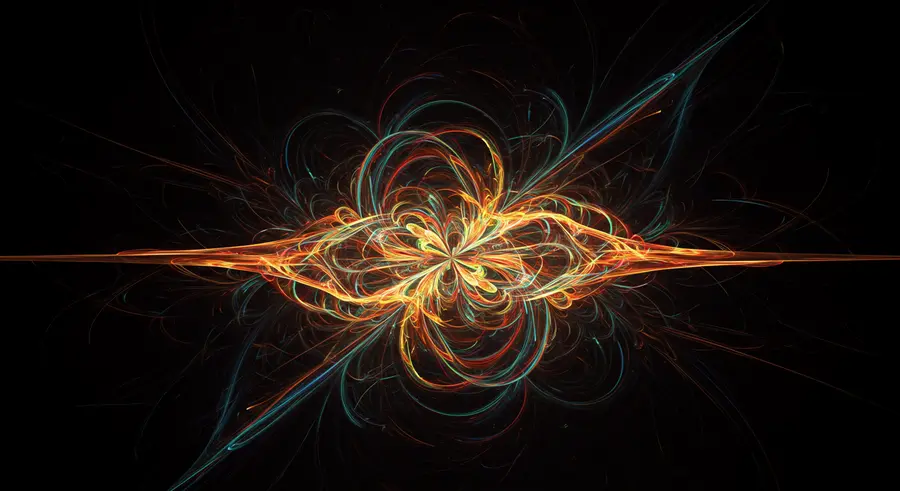Appearance
Unveiling Generative Art Algorithms: Where Code Breathes Beauty 🎨✨
"Let the pixels tell your story." This isn't just a mantra; it's the very heartbeat of Generative Art, a realm where algorithms transform into a brush, and code becomes a lyrical poem whispered across a digital canvas. For Elena “PixelCraft” Kuznetsov, every line is a brushstroke, every computation a step towards captivating visual expression. Today, we'll dive deep into the magic where algorithmic art meets aesthetics, and pixels dance to the rhythm of your code.
What is Generative Art?
At its core, Generative Art is art created by an autonomous system. This system, often a set of Generative Art Algorithms, takes a series of rules or instructions and executes them to produce unique visual outcomes. It’s a dance between human intent and machine execution, where the artist sets the stage and the algorithmic processes bring the performance to life. Think of it as cultivating a garden: you plant the seeds (the rules), and nature (the algorithm) determines the final, often surprising, bloom.
The Pillars of Algorithmic Art: Core Concepts
Generative Art Algorithms are built upon several fundamental principles that allow for complex and beautiful outputs from simple beginnings:
1. Randomness & Noise: The Breath of Life 🌬️
Pure predictability can be sterile. The introduction of randomness (controlled chaos!) or noise functions (like Perlin noise, Simplex noise) is crucial. It adds an organic, unpredictable quality that mimics natural phenomena, making algorithmic art feel alive. This is where the magic truly happens, transforming rigid rules into dynamic, flowing forms.
2. Iteration & Recursion: Echoes of Infinity 🌌
Many Generative Art Algorithms thrive on repetition.
- Iteration involves repeating a set of instructions a fixed number of times or until a condition is met. This is fundamental to patterns, animations, and the gradual evolution of a form.
- Recursion is when a function calls itself. This is the cornerstone of fractal geometry, where a pattern repeats itself at different scales, creating an infinite echo chamber of detail. "A fractal is a whispering echo of itself, infinite in detail."
3. Rules & Systems: The Architect's Blueprint 📐
Before a pixel can dance, there must be a plan. Algorithmic art relies on defining clear rules or systems. These can range from simple geometric transformations to complex simulations of natural growth, like L-systems (Lindenmayer systems) that model plant development. The artist's role here is akin to an architect, designing the parameters within which the Generative Art Algorithms will operate.
Popular Generative Art Algorithms & Techniques
Let's explore some captivating Generative Art Algorithms that open up endless creative possibilities:
A. Fractals: The Beauty of Self-Similarity 🌀
Fractals are perhaps the most iconic example of algorithmic art. Defined by recursive rules, they exhibit self-similarity—meaning patterns repeat at every scale.
- Mandelbrot Set & Julia Sets: These iconic fractals are generated by iterating simple equations in the complex plane, revealing astonishing complexity and infinite detail.
- Barnsley Fern: A classic example of an Iterated Function System (IFS) that uses a few affine transformations to produce a natural-looking fern.
B. L-Systems: Growing Digital Gardens 🌿
L-systems, or Lindenmayer systems, are a formal grammar used to model the growth of plants and other biological systems. By applying a set of production rules iteratively, simple "axioms" can blossom into incredibly intricate and organic forms. Imagine defining rules like "if you see an 'F' (forward), replace it with 'F[-F]F[+F][F]' (forward, turn left, forward, turn right, forward, turn left, forward, turn right, forward)," and watching a digital tree emerge.
C. Cellular Automata: Life in Pixels ⬜⬛
Cellular automata, such as Conway's Game of Life, are systems where a grid of cells evolves based on simple rules applied to their neighbors. Each cell's state (e.g., alive or dead, a specific color) changes based on the states of its surrounding cells. This simplicity gives rise to surprisingly complex, emergent behaviors and mesmerizing patterns, showcasing how algorithmic processes can simulate life itself.
D. Agent-Based Systems (Swarm Intelligence): Collective Beauty 🦋
Inspired by nature's swarms (birds, fish), agent-based systems involve multiple simple "agents" that follow local rules and interact with their environment and each other. The collective behavior of these agents can lead to emergent, complex, and often beautiful patterns. Think of boids (bird-oids) simulating flocking behavior, creating organic, dynamic movements.
E. Perlin Noise & Flow Fields: Organic Textures & Motion 🌊
Perlin noise is a gradient noise function used to generate natural-looking textures (clouds, fire, terrain). When combined with flow fields, where each point in space has a directional vector, particles can be "blown" across the screen, creating stunning, fluid animations that mimic smoke, water, or even abstract brushstrokes.
Visualizing the Algorithm: An Example
Here’s an image generated by an Algorithmic Art process, embodying vibrant colors, flowing lines, and intricate patterns—a true testament to how computational aesthetics can manifest:

This image beautifully illustrates the core idea: complex, organic-looking forms can arise from carefully designed Generative Art Algorithms.
The Creative Canvas: Your Turn to Create!
Creative coding empowers you to become a digital alchemist. Tools like p5.js, Three.js, Processing, and GLSL shaders provide the frameworks to experiment with these Generative Art Algorithms. Don't be afraid to:
- Experiment with parameters: Small changes to a rule can lead to drastically different outcomes.
- Combine techniques: Merge fractals with flow fields, or L-systems with agent behaviors.
- Embrace the unexpected: Sometimes, the most beautiful results are happy accidents.
"Compute, create, captivate." Every line of code you write is a brushstroke. Let your imagination guide your algorithms, and watch as your pixels tell a story that is uniquely yours. The world of Generative Art Algorithms is vast and exciting—jump in and let your creativity flow!
Further Exploration:
- Explore more about GLSL shaders for real-time graphics.
- Dive into computational geometry for new artistic forms.
- Discover interactive art installations that use these principles.